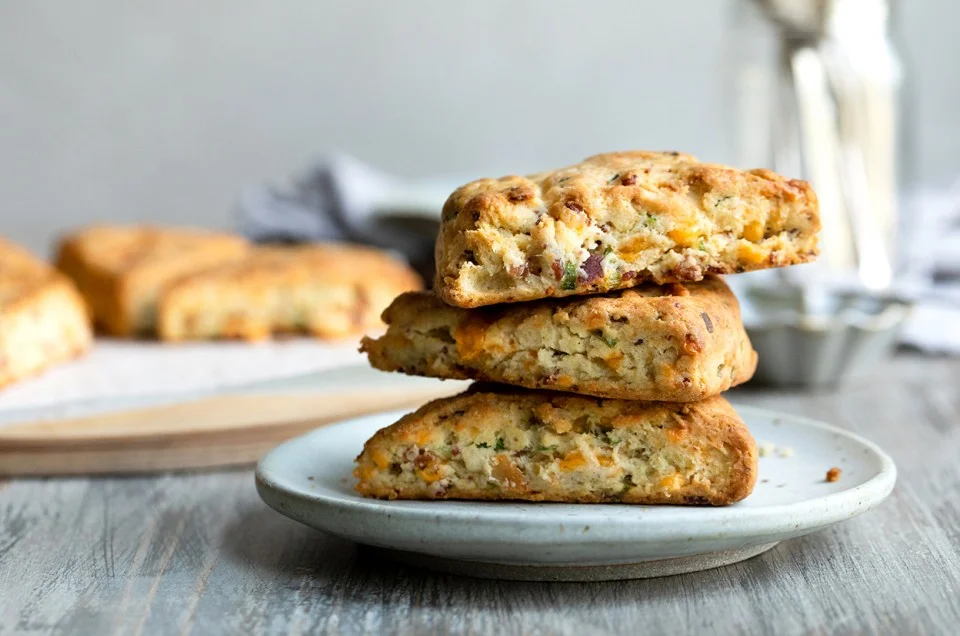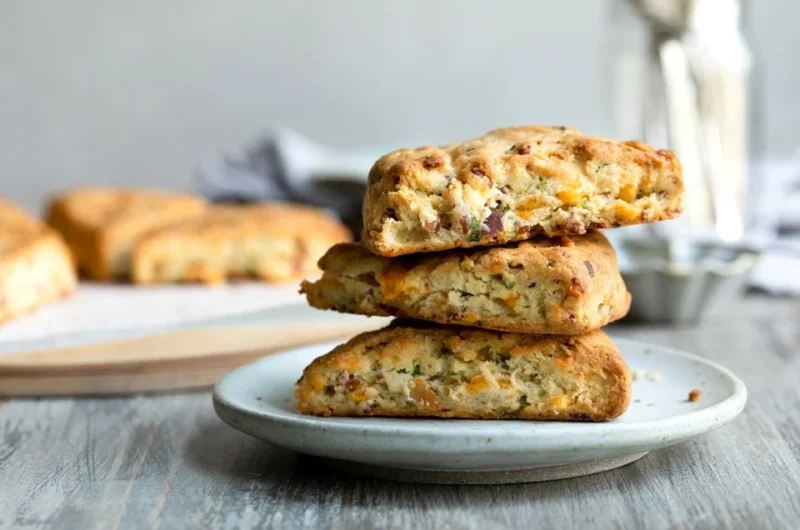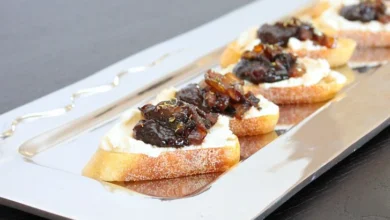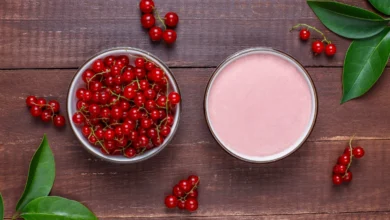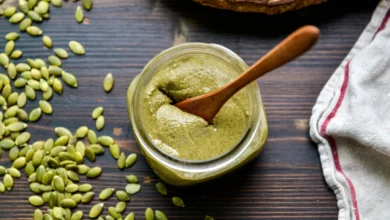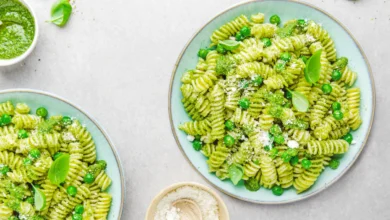Bacon Cheddar Chive Scones: Better Than Any Bakery
When I think of cozy weekend mornings, visions of warm pastries and small café tables often dance in my head. While muffins and bagels get plenty of love, I have an absolute favorite: scones. Often sweet with oats or fruit, a beautifully crafted savory scone is an absolute treat. Unlike the standard muffin, scones have a special, old-fashioned charm – a comforting, homey experience I crave.
Contents
The Secret to Scone Success
Honestly, scone recipes can easily go awry. The promise of an ethereal, tender crumb depends on understanding a few key factors. Cold butter and avoiding overworking the dough are worth the precious effort. While I have a soft spot for the sweet, fruity variety, starting with a slightly sturdier dough is the key to success when you’re adding delicious mix-ins. Think of this as an extra-buttery biscuit base – perfect for breakfast!
Make-Ahead Mornings & Savory Scone Obsession
I love a good bakery’s take on the original scone, but there’s something special about making your own. Savory scones, especially with an elevated combo like bacon, cheddar, and chive, are a baked treat that promises not to disappoint. Since savory scones don’t take long to pull together, they’re not the ideal recipe if you want a head start the night before. But here’s the trick: prepare the dough, shape the scones, and pop them in the freezer. Then, whenever a craving strikes, you can bake them directly from frozen. They’ll still taste fresh and fluffy, from start to finish!
Recommended Tools
Want to make sure your Bacon Cheddar Chive Scones come out perfectly every time? Here are a few kitchen tools I swear by:
- Cheese Grater: My secret to incredibly fluffy scones is freezing the butter and then grating it directly into the dry ingredients. It’s so much easier to incorporate than cutting in small pieces of cold butter! Use a box grater for the best results.
- Bench Scraper: This might seem like an odd addition, but a bench scraper is my favorite tool for portioning any kind of dough – from bread and pie crust to scones and even pizza. It gives you clean cuts and makes handling the dough a breeze.
Nutritional Information
| Nutritional Information | Amount Per Serving |
| SERVING SIZE: 1 scone (109g) | |
| SERVINGS PER BATCH: 8 | |
| – | – |
| CALORIES: | 460 |
| TOTAL FAT: | 32g |
| SATURATED FAT: | 16g |
| TRANS FAT: | 0.5g |
| CHOLESTEROL: | 90 mg |
| SODIUM: | 920 mg |
| TOTAL CARBOHYDRATE: | 26g |
| DIETARY FIBER: | 1g |
| TOTAL SUGARS: | 2g |
| PROTEIN: | 18g |
Bacon Cheddar Chive Scones
Course: BrunchunchCuisine: American8-10
scones20
minutes25
minutes300-500
kcal45
minutesHere is the detailed description of Bacon Cheddar Chive Scones. Print it for your ease.
Ingredients
Flour Power: 2 cups (240g) of King Arthur Unbleached All-Purpose Flour provides structure, or opt for a delicate crumb with 2 cups (226g) of King Arthur Pastry Flour Blend.
Seasoned Base: A sprinkle of table salt (1/2 teaspoon) and a generous helping of baking powder (1 tablespoon) ensure your scones rise beautifully.
Sweet Touch: Just a hint of granulated sugar (2 teaspoons) balances out the savory flavors.
Buttery Goodness: 4 tablespoons (57g) of cold butter is the key to flakiness. For best results, grate it directly into the dry ingredients.
Cheesy Delight: 1 cup (113g) of very coarsely grated or diced cheddar cheese adds cheesy bursts of flavor.
Herbal Notes: Choose either 1/3 cup (about 14g) of snipped fresh chives or 1/3 cup (21g) finely diced scallion tops for a hint of freshness.
Bacon Bits: 1/2 pound (227g) of cooked, cooled, and crumbled bacon adds a delightful savory crunch.
Creamy Cohesion: Start with 3/4 cup + 2 tablespoons (198g) of heavy cream or whipping cream. Add a bit more if needed to bring the dough together.
Directions
- Preheat your oven to 400 °F (200 °C) with a rack in the center position.
- Grease a baking sheet or line it with parchment paper for easy cleanup.
- In a large bowl, whisk together the flour, salt, baking powder, and sugar.
- Grate the cold butter directly into the flour mixture. Work quickly using your fingertips or a pastry cutter until the mixture is unevenly crumbly with pea-sized pieces of butter.
- Gently mix in the shredded cheese and chives until they’re evenly distributed throughout the dough.
- Pour in ¾ cup of heavy cream and stir the mixture just until it starts to combine. Avoid overmixing – don’t try to get rid of all the dry bits. If the dough looks too dry, add another tablespoon or two of cream.
- Gently turn out the dough onto a well-floured surface. It will be shaggy with lots of loose crumbs – that’s okay!
- Use your hands to gently pat the dough into a smooth 7-inch disk, about ¾ -inch thick.
- Using a sharp knife or bench scraper, cut the disk into wedges and spread them a bit apart on the prepared baking sheet.
- Brush the tops of the scones lightly with a bit of cream for a beautiful golden crust.
- Bake for 20-22 minutes, or until the scones are golden brown.
- Enjoy
- Remove from the oven and cool slightly before serving.
- These are best served warm or at room temperature. Refrigerate any leftover scones, well wrapped, for several days; reheat gently before serving. For longer storage, freeze the scones individually.
Notes
- Cheese Swap: Feel free to experiment with other cheeses! Gruyere, smoked cheddar, or a blend would be delicious.
- Make Your Own Flavor: Mix and match your favorite savory additions. Try chopped sun-dried tomatoes and feta, caramelized onions and goat cheese, or even jalapenos for a spicy kick.
- Dairy-Free Options: Substitute the heavy cream with a plant-based alternative and try a vegan cheese option.
- Freezing: Prepare the scones as directed and freeze unbaked on a baking sheet. Once frozen, wrap individually and store for those quick-fix scone cravings.
Tips from Our Bakers
- For Smaller Scones: Divide the dough in half, roll each portion into a round, and cut into wedges for smaller, individual-sized scones.
- Bake from Frozen: These scones freeze beautifully! Shape and cut them as directed, then place them on a baking sheet without brushing with cream. Freeze until solid. Once frozen, remove them from the baking sheet, place them in an airtight plastic bag, and store them in the freezer. When you’re ready to bake, place the frozen scones on a baking sheet, brush with cream, and bake in a preheated oven until golden brown (this may take a few extra minutes compared to fresh dough).
Make Ahead and Storage Tips
- Room Temperature Storage: Scones are best enjoyed the day they’re made, but they can be individually wrapped and stored at room temperature for up to 2 days.
- Freezing Leftovers: Freeze leftover scones in an airtight storage container for up to 1 month.
- Make-Ahead Magic: Unbaked scones can be frozen for up to 2 months. Prepare the batter and shape the scones on a baking sheet as outlined in step 3 of the “Instructions” section. Place the baking sheet in the freezer. Once the scones are hardened, remove them from the sheet, wrap them individually in plastic, and pop them into a ziptop bag. When you’re ready to eat, bake them as directed from frozen, adding a few minutes to the baking time as needed.
RELATED: Apple and White Chocolate Scones
Final Thought
These Bacon Cheddar Chive Scones are a delightful twist on the classic pastry, offering a burst of savory flavors and a satisfying texture. Whether you enjoy them fresh from the oven, pop a few frozen ones in for a quick breakfast, or serve them as part of a light meal, they’re incredibly easy to make and even easier to love. Give this recipe a try, and you might just find yourself ditching those store-bought muffins for a homemade savory treat!
_______________________________
Frequently Asked Questions
What is the secret to moist scones?
The key to moist scones is keeping the dough cold. Cold ingredients prevent the scones from over-spreading in the oven. This helps them retain a flaky, moist, and deliciously crumbly texture. Overworking the dough can toughen them, so the easiest way to avoid this disaster is to use very cold ingredients like grated butter, heavy cream, and even a cold egg.
What to avoid when making scones?
- Warm Ingredients: Using anything but cold ingredients is a recipe for dense scones. Start with cold butter, cold eggs, and cold cream for the flakiest results.
- Substituting Flour: Stick with all-purpose flour for the best structure.
- Overmixing: Overmixing the dough will make your scones tough.
- Skipping the Chill: If you can, chill the shaped scones before baking for a better rise.
- Not Working Quickly: Be efficient when handling the dough to keep the butter cold.
How many calories in a bacon cheddar scone?
This can vary depending on the recipe and size. However, as a general guideline, a standard-sized bacon cheddar scone can have around 300–500 calories. For a specific example, Central Market Mini Bacon Cheddar Scone (2 pieces) contains 310 calories.
What do you eat with cheddar scone?
A cheese scone can be a satisfying snack on its own or part of a light meal for lunch or dinner. Serve it with a simple side salad for freshness. Chop up lettuce, tomato, cucumber, radish, peppers, and throw in a few olives for saltiness to perfectly complement the creaminess of the scone.
Which flour is best for scones?
While all-purpose flour is the standard choice for a higher-rising scone that holds its shape nicely in the oven, you have options:
- Cake Flour: For a more delicate, lower-rising, cake-like scone, try this substitute. Reduce the liquid in the recipe slightly (around 1–2 tablespoons) to bring the dough together.
Why are my scones not fluffy?
- Stale Baking Powder: Make sure your baking powder is fresh (opened less than 6 months ago).
- Overworking the Dough: Knead the dough too much and your scones won’t rise tall. Gently bring the ingredients together until they just form a dough.
- Too Much Flour: Adding too much flour prevents a high rise, so dust your work surface lightly.
Why is butter important in scones?
It’s all about steam! The many pockets of butter in scone dough, when they hit a hot oven, melt. The water in the butter turns to steam, helping the scones rise just a little.
What makes scones rise best?
- Cold Butter: The colder, the better! Grating frozen butter into the dry ingredients is a great trick.
- Handle Gently: The less you overdo the mixing, the better. The dough should just come together.
- Pastry Flour: This creates the lightest scones.
- Chill Before Baking: If time allows, chill the shaped scones before baking, as Youngman suggests.

